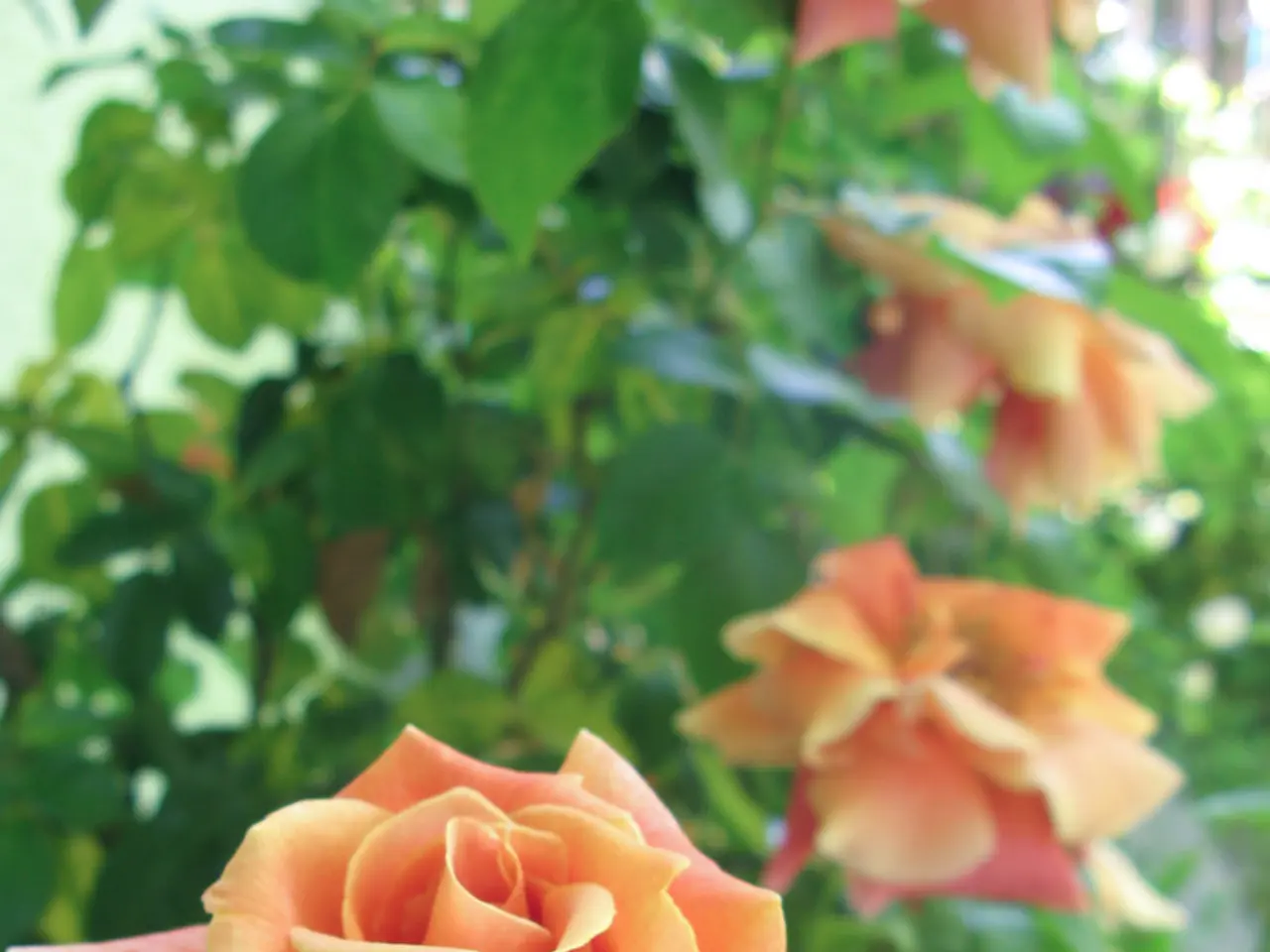Reviving a rose from the bouquet: A practical guide on keeping unwilted the discarded flowers
If you've ever found yourself with a wilted bouquet of roses, pelargoniums, or lavender, you might be surprised to learn that you can transform them into a thriving home garden. Here's a step-by-step guide on how to root cuttings from flowers and create your own garden without the need to buy expensive saplings.
- Select a Healthy Stem
Choose a healthy, non-flowering stem about 6–10 cm (2.5–4 inches) long. Cut it just below a leaf node (where leaves attach to the stem) with a clean, sharp knife or scissors.
- Prepare the Cutting
Remove the flowers and lower leaves to reduce moisture loss, but leave some leaves on top to photosynthesize and support root growth.
- Optional Yeast Method (optional)
Soak the cuttings for about 20 minutes in a mixture of water with yeast powder or a brown sugar and yeast solution. This old-school method helps stimulate root growth, improves soil quality, and prevents hardening around roots.
- Place the Cutting
Put the prepared cutting into a container filled with well-draining soil or water. If using water, choose a clear jar with room temperature water and change the water every 3-4 days to avoid bacteria growth.
- Location and Care
Keep the cuttings in a bright spot with indirect sunlight. Keep the soil or rooting medium moist but not soggy.
- Wait for Roots
Roots usually start forming in 4 to 6 weeks. Once visible and healthy, transplant the rooted cutting into a pot with premium potting mix for further growth.
Additional Tips
- Take multiple cuttings to increase chances of success.
- Avoid direct harsh sunlight, which can dry the cuttings quickly.
- Keep an eye out for mold or rot, remove affected cuttings immediately.
This method works well with many common garden plants like pelargoniums, roses, lavender, and begonias. The yeast treatment is a natural, inexpensive way to boost rooting success at home. Monitor the water level regularly, adding more as needed.
This accessible method offers wide possibilities for creating a home garden without the need to buy expensive saplings. Happy gardening!
References
- Gardening Know How
- Garden Myths
- HGTV
- Garden Guides
- The Spruce
- To increase the chances of success with a home-and-garden project, consider taking multiple cuttings from plants like pelargoniums, roses, or lavender.
- Transform your home-lifestyle by creating a thriving home garden using the guidance in this step-by-step guide, particularly focusing on growing plants from cuttings such as pelargoniums, roses, or lavender.




